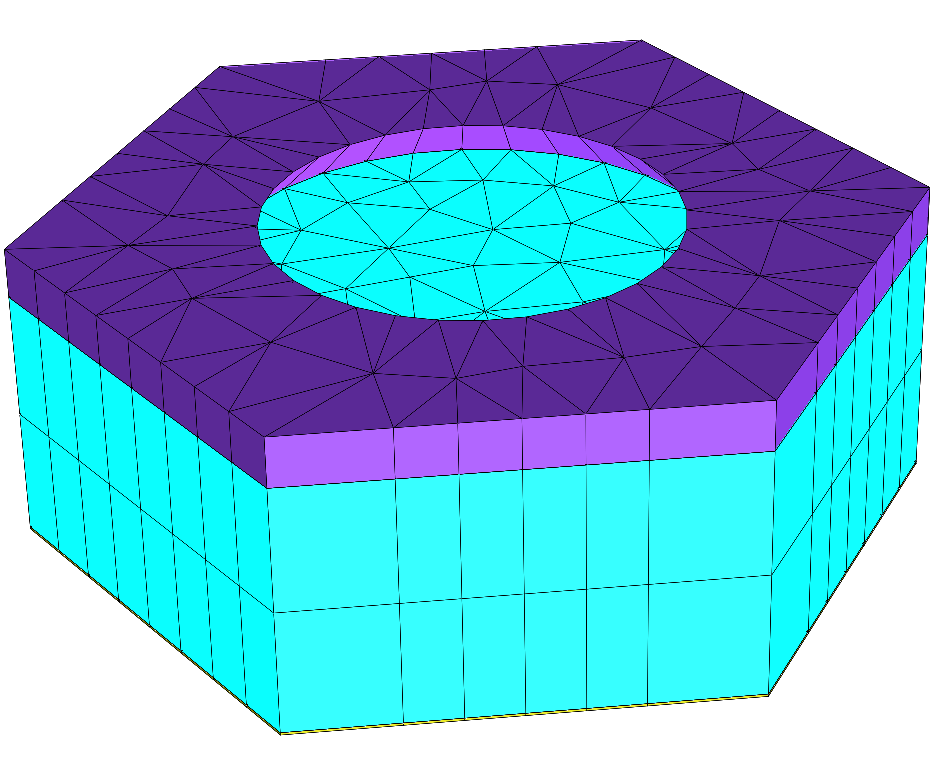Periodic boundaries II¶
Learning targets
- Periodic boundary conditions
- 2D-periodic hexagonal lattice of 3D objects with transparent boundary conditions in the third dimension
- Usage of automatic unit cell construction
This example constructs the unit cell for a periodic array of nano-scale circular holes in a thin layer (e.g. metal) on top of a substrate. The periodic lattice is hexagonal.
The following figure shows an image of parts of the geometry and mesh:
The periodic boundary conditions are defined in the 2D section of the 3D layout, the transparent boundary conditions are applied in the Extrusion section of the layout.
.jcm Input File
layout.jcm [ASCII]
1 2 3 4 5 6 7 8 9 10 11 12 13 14 15 16 17 18 19 20 21 22 23 24 25 26 27 28 29 30 31 32 33 34 35 36 37 38 39 40 41 42 43 44 45 46 47 48 49 50 51 52 53 54 55 56 57 58 59
Layout3D { UnitOfLength = 1e-09 MeshOptions { MaximumSideLength = 50 } BoundaryConditions { Boundary { Direction = Vertical Class = Transparent } } Extrusion { Objects { Polygon { Name = "ComputationalDomain/Background" DomainId = 1 Priority = -1 PeriodicUnitCell { LatticeVectorLengths = [300 300] LatticeAngle = 60 Shape = Hexagonal } } Circle { Name = "Circle" DomainId = 2 Radius = 100 RefineAll = 2 } } MultiLayer { MeshOptions { MaximumSideLengthZ = 50 } Layer { Thickness = 100 DomainId = 1 } Layer { Thickness = 20 DomainIdMapping = [1 2 2 3] } LayerInterface { GeometryValues = [ Circle/Radius = 80 ] GlobalZ = 10 } Layer { Thickness = 100 DomainIdMapping = [1 3] } } }
